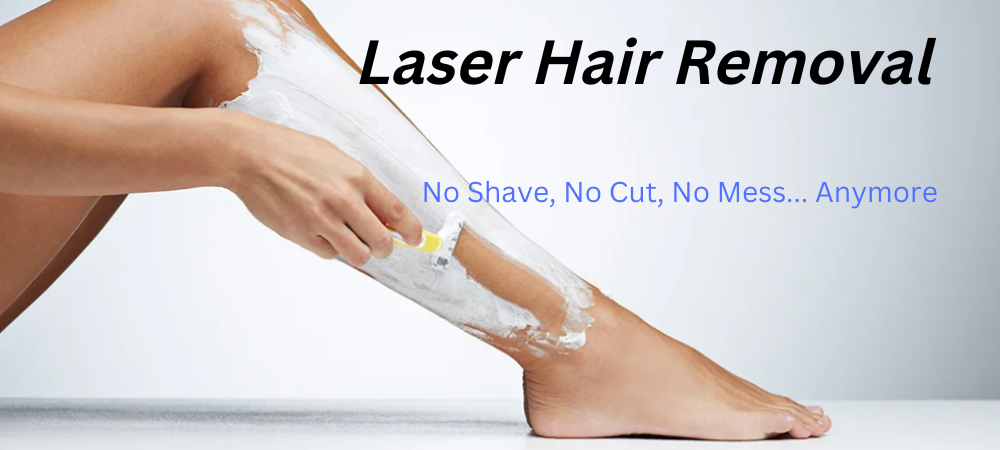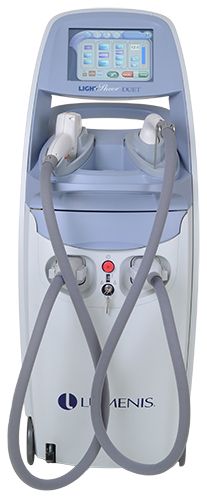
 Why Laser Hair Removal?
Why Laser Hair Removal?
Laser Hair Removal is helping to reduce unwanted hair. Moreover, it’s doing it faster, more reliably and more comfortably than other standard methods like electrolysis, shaving and tweezing. Laser hair removal has proven to be a giant step forward in hair removal technology.
Where can I laser to remove hair?
Excessive hair growth is the result of heredity, hormonal factors, and some medications. Commonly treated areas are the face, back, neck, legs, bikini line, chest and underarms. Any skin area can be treated except eyelids.
How does it work?
At Lolachi Institute, we utilize the LightSheer diode laser (the gold standard for laser hair removal), to target the pigment located in hair follicles. Flashes of laser light cause thermal injury to the targeted hair follicle, causing the unwanted hair to fall out, while avoiding damage to the normal surrounding tissue.
Is the procedure painful?
Not at all. The laser offers a cooling device that automatically cools on contact to protect the skin while directing the laser energy to the hair follicle. For optimal results, Lolachi Institute recommends a series of 4 to 6 treatments four to six weeks apart (depending on the area being treated).
Frequently Asked Questions about Laser Hair Removal
Though there are many ways to remove unwanted hair (such as shaving and plucking), laser hair removal is an efficient method of hair reduction. Also, large areas can be treated via laser at each treatment session, making this procedure faster and even more cost-effective than other methods of hair removal.
The laser is a beam of light that searches for a mass of hair follicles (not just one like electrolysis or tweezing) under the skin targeting only the hair follicles, thereby destroying the root. For comfort, the skin is cooled during the process with the laser’s chill tip device. The laser destroys hairs in their mature phase. Only 20% of our hair is in the mature phase at any given point in time.
Everyone is unique and will react differently to the laser. The FDA has approved several types of lasers as permanent hair reduction devices. However, that does not mean 100% hair removal, and currently there is no laser on the market that will result in 100% hair removal. With laser hair removal, a significant percentage of hair that is treated with the laser will not grow back, and the more sessions that are done, the better the results. Each session is more successful at removing the remaining hairs than the previous.
The costs of laser hair removal vary. A clinic or practitioner may charge based on time, number of laser pulses or a package fee. It is important to trust the practitioner and/or clinic so you feel confident in their fee schedule. Bear in mind that cost will differ depending on the area of the country, as well as the clinic you choose, and whether a doctor or a nurse is doing the treatment.
Laser hair removal is considered a cosmetic procedure and not covered by insurance.
Laser treatments can take from just a few minutes to a few hours, depending on the size and the number of areas being treated. A smaller area, such as the bikini or the under arm, can take as little as ten to fifteen minutes, as opposed to the back or leg which can take up to 45 minutes.
On average, people need between 6 and 8 sessions to really see results, meaning about 90% hair reduction in the area treated. Every individual however, will respond differently. A small percentage of the population will not respond to treatment, and are considered “non-responders”.
Depending on the body area being treated, one should wait four to six weeks between each session. However, you should know that even if you cannot see the hair, it can still be actively growing beneath the skin and the laser can find and remove the hair follicle successfully. Areas above the neck should be treated more often than other areas.
With each session you should see a slight decrease in the amount of hair in the treated area. The results will vary for people with hormonal imbalance.
There is an ideal skin tone and hair color for laser hair removal, but that does not mean everyone else is excluded. The ideal candidate for laser hair removal is a person with fair skin, and dark coarse hair. You should avoid sunbathing, sun tanning, or artificial tanning (including spray tans), before and after the procedure. The most unsuccessful candidates for laser hair removal are those with red or blonde hair and darker skin tones. Gray and white hair does not respond to laser hair removal at all.
The FDA has approved laser hair removal as a safe means of hair reduction. To assure the safest treatment, when you select a clinic and/or practitioner, make sure the facility is clean, and that the treatment is being performed by either a Physician or a Registered Nurse.
Most people will have slight redness or “sunburn-like” reaction on the treated skin. This is temporary and will go away quickly, leaving no side effects. However, when there is a complication, there may be permanent skin discoloration and “blotchiness” in the treated area. It is important to listen to the practitioner carefully and to follow all recommendations for before and after treatment explained to you during your consultation and treatments.
The FDA has approved laser hair removal as a safe procedure. To-date, there have been no illnesses or diseases related to the laser. In fact, our everyday exposure to the sun has more significant risks than the use of the laser.
Except for the area around the eyes, almost any area of the body with excess hair can be treated with lasers. Most commonly, patients ask for treatments for their face, upper lip, neck, chest, breasts, underarms, arms, back, abdomen, bikini line and legs. Many people have areas of unwanted hair and are embarrassed to discuss them with their doctors. During your complimentary consultation, you may discuss any questions you have, with either the laser advisor, or the physician.
The laser hair removal clinic and the practitioner are very important. Just like any procedure or personal experience it is important to have a positive rapport with the practitioner and to feel confident in the service you are being given. If you do not meet a physician at some point before your treatment begins, this is a bad sign. You should request to see a physician before treatments are started, as laser hair removal is considered a medical procedure and a physician should evaluate your medical history before you start treatment.


